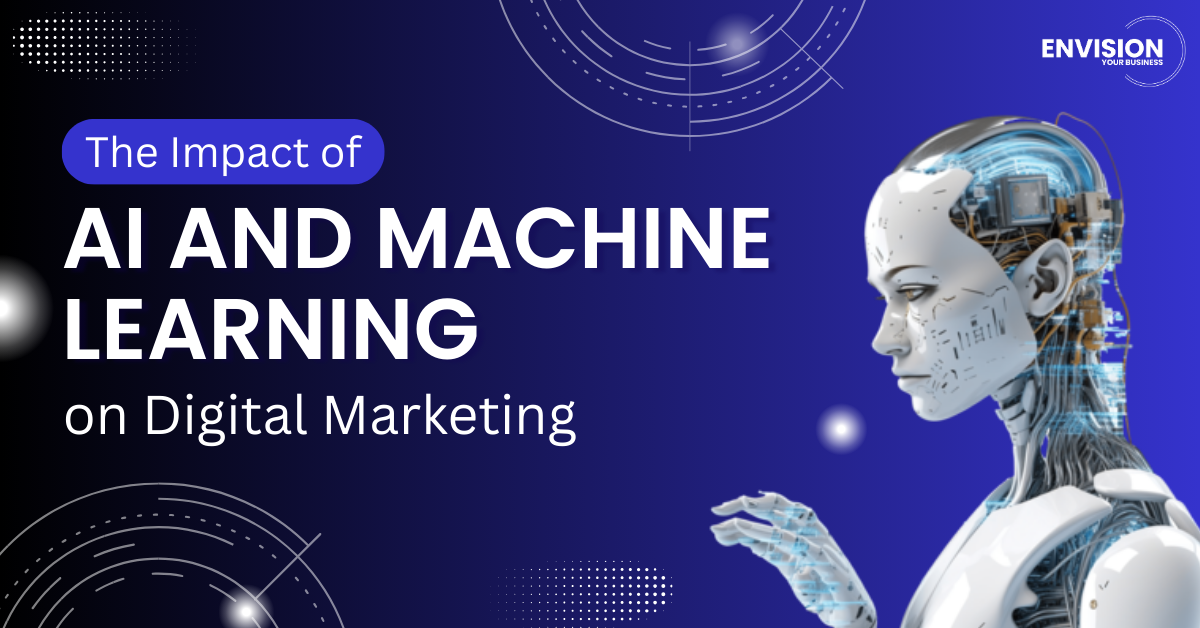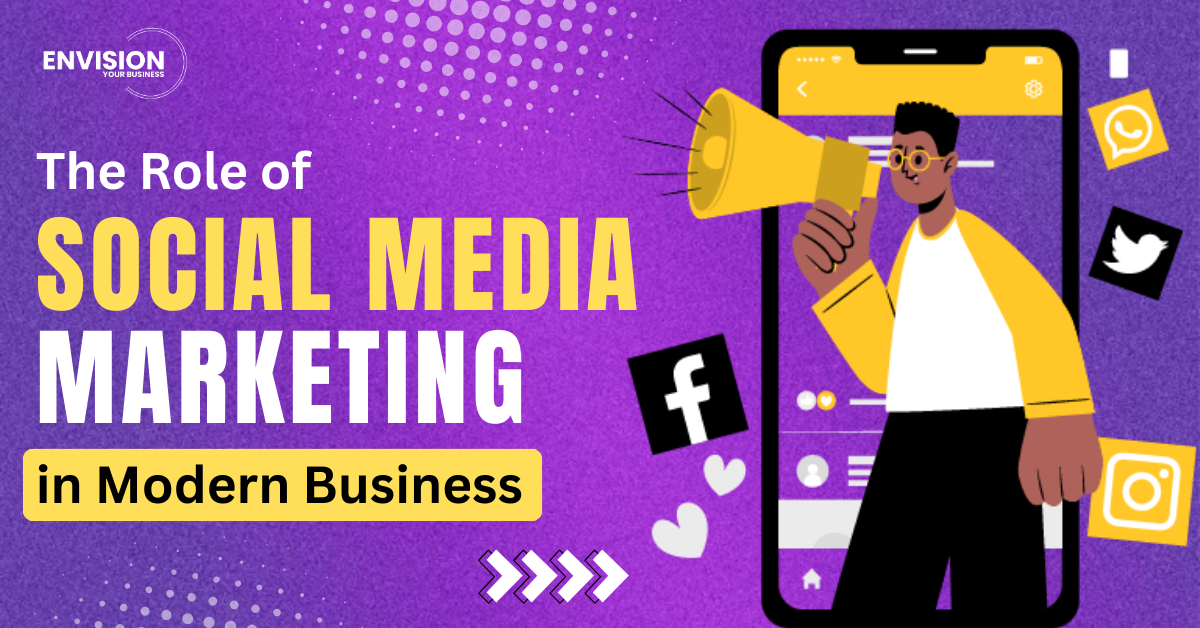
The Impact of AI and Machine Learning on Digital Marketing
The digital universe is changing at an accelerated pace, and there is one clear facilitator behind this phenomenon: Artificial Intelligence (AI) and Machine Learning (ML). These are not simply buzzwords any longer. They are part and parcel of digital marketing strategies that enable brands to connect with their customers on a smarter and more personalized level. In this post, we’ll take a look at the relationship between AI and machine learning (and how to define them), as well as how they are transforming the future of digital marketing.
How is AI and machine learning related?
While artificial intelligence and machine learning are sometimes used interchangeably, they are not one and the same. They are closely related, with subtle differences.
The wider field is AI: AI can tackle tasks that are normally done by humans, like understanding languages, recognizing patterns, solving problems or making decisions.
Machine Learning, in the other side, can be categorized under AI. It is simply the science of training machines to learn from data. Unlike regular programs, where humans hard-code instructions that dictate how algorithms should solve a problem, machine learning systems form conclusions based on examples. Such as pictures of cats -- that are fed into algorithms.
In simple terms:
- AI is the ambition: making machines that can reason and act like people.
- Machine Learning is the how: enabling machines to learn from data and get better over time.
Without machine learning, AI would be no more effective than its predecessors: with regular if-only-then logical models. Combined, they provide smarter, more powerful digital marketing tools that can anticipate trends, personalize content and automatically optimize campaigns.
What is AI and Machine Learning?
Let’s break it down further:
Artificial Intelligence (AI)
AI consists of the development of computer systems able to perform tasks that usually demand human intelligence. These tasks can include:
- Speech recognition
- Decision-making
- Language translation
- Visual perception
There are two types of AI:
- Narrow AI (or Weak AI): Decked in on a single task, such as a chatbot that responds to customer questions.
- General AI (or Strong AI): A higher-level entity that can complete any intellectual task that a human can do (this is still mostly within the realm of science fiction).
Machine Learning (ML)
Machine Learning is a division of Ai that makes it possible for computers to learn from data. Unlike human-designed solutions that are hard-coded for specific situations, ML systems get better with experience. For example, a machine learning model might sift through thousands of customer interactions to predict which leads are most likely to turn into sales.
Machine Learning comes in several flavors:
- learning involves learning from examples e.g. OMUXL from labeled data.
- Unsupervised learning (discovering patterns in data)
- Reinforcement learning (learning by trial and error)
Both AI and ML have a compelling role in digital marketing, as they automate complicated tasks and allow marketers to get better, quicker and more accurate results.
How AI And Machine Learning Are Changing Digital Marketing?
Now that we have the basics down, let’s take a look at how these tech trends are transforming digital marketing:
Customer Experience Personalization
Hyper-personalization of customer experience is one of the biggest contributions of AI and ML. Its algorithms have the ability to create hyper-personalized customer experiences. Machine learning algorithms process customer behavior, purchase history, demographics, and online activity to predict what a user will like.
For example:
- Netflix uses AI to suggest what movies or show you might like based on what you’ve watched in the past.
- Amazon recommends things you are likely to purchase.
In digital marketing, this translates to emails, ads, and content that are custom-made for each user, which drives better engagement and conversion.
More Intuitive Content Creation and Curation
Tools powered by A.I. like ChatGPT (why yes, that includes me!) can now write human-like calendar invites, recommend what to blog about or even compose complete marketing emails. Machine learning also plays a role in content curation.
For example, by being able to predict which articles, videos or social media posts a particular audience is most likely to want to read, see or engage with.
Now, marketers have the tools to automate content production for newsletters, product descriptions, even social media posts, directly in line with the brand’s tone and style.
Predictive and Customer Modeling
Predictive analytics using machine learning allows brands to predict future behaviour of their customers using historical data. This helps marketers:
- Reach the proper customer at the proper time
- Learn customer lifetime value
- Reduce churn rates
- Drive up customer satisfaction
For example, a retail brand can use predictive models to predict which customers are most likely to make repeat purchases and develop targeted loyalty campaigns.
Chatbots and Virtual Assistants:
AI-driven chatbots have helped to disrupt customer service. These are bots that can manage explaining FAQs, they can make the sale for you, they can troubleshoot common problems and even handle bookings — all around the clock, without requiring any human intervention.
They get smarter over time as they can use machine learning to better read user sentiment and understand more complicated inquiries. Businesses such as Sephora, H&M, or even banks have implemented chatbots allowing them to better serve customers through immediate response times while reducing operational costs.
Ad Targeting and Purchasing in Automation
The days are long gone when media buying was mostly artful guesswork and manual research. These days we use AI and ML to automated ad buying. They have algorithms that utilize machine learning to maximize the performance of an ad slot, putting the best ad in front of the best audience at that moment with the best message.
- Programmatic advertising — where artificial intelligence does the automatic buying and placing of ads — is already a mainstream technology. It delivers maximum ROI on the advertising spend for brands by efficiently reaching out the right audience.
Visual Recognition and Search
Computer vision is changing how consumers shop online. Pinterest and Google offer the ability to search by image rather than text. Brands add tags, categorize and optimize images, while AI-equipped visual search powers consumers so they can search for products they find in pictures.
This change is forcing brands to take more care over producing quality visuals and SEO techniques that are more than just optimizing text.
Voice Search Optimization
Voice search has become a hot topic with the popularity of AI assistants such as Siri, Alexa, and Google Assistant. Voice queries tend to be longer and more conversational, which is shaping how marketers think about SEO.
Brands are increasingly trying to make their websites voice search-friendly through:
- Long-tail keywords
- Natural language processing
- Featured snippets and FAQs
Voice search is an essential component to a well rounded digital marketing strategy as machine learning algorithms help voice assistants comprehend what users say and provide accurate responses.
The Future: What Lies Ahead?
AI and Machine Learning are going to make an increasing impact on digital marketing. With the advancement of these technologies, marketers will even know what customers want before the customers know that they need it.
We can expect:
- Even more personalized with live data processing
- More intelligent automation features to handle full marketing campaigns
- Digital advertising resulting in better fraud detection
- Weightier ethical quandaries around the data privacy/AI-establishment transparency spectrum
The brands that eagerly take AI and ML into their arms today are going to be the front runners of tomorrow. Yet it’s critical to use these technologies thoughtfully — balancing automation with the human touch of personalization to ensure authenticity and trust.
Conclusion
AI and Machine Learning are no longer science fiction. They are seeding the future into the here and now, both are transforming digital marketing at its core. The list of possible benefits is long, from personalized customer experiences and automating ad targeting to smarter content creation. By understanding how AI and ML functions, and using their power judiciously and effectively, marketers can produce more relevant, impactful and winning campaigns that connect with their intended targets on a deeper level.
The digital futurologist: It’s not just digital, it’s intelligent!




